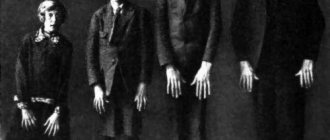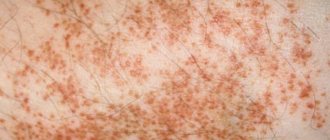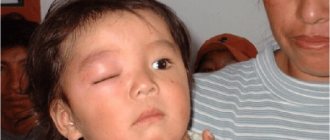Raynaud's syndrome is a serious condition that is caused by spasm of peripheral blood vessels. Because of it, blood flow in the small vessels of the legs (at the level of the feet) and hands is disrupted. This syndrome is usually one of the symptoms of many other diseases. For example, it occurs in rheumatism, endocrine disorders, psychopathy, etc. Only sometimes it is impossible to determine the underlying disease, so Raynaud's disease may be considered independent.
Most often, this syndrome affects young and mature women, as well as residents of regions with cold climates.
Provoking factors
The underlying causes of Raynaud's syndrome have not been identified, but there are a number of factors that, according to doctors, contribute to its development. These include:
- hereditary tendency;
- permanent injury to fingers and toes;
- endocrine system disorders: diabetes, hyperthyroidism, hypothyroidism, etc.;
- disorders associated with hematopoietic functions;
- constant contact with cold water;
- some diseases of the spine;
- alcohol dependence, drug addiction;
- unstable mental state;
- heavy metal intoxication;
- serious stress;
- constant contact with chemicals;
- certain autoimmune diseases.
The disease in an advanced state can manifest itself even without provoking factors - then they talk about spontaneous attacks of Raynaud's syndrome.
Raynaud's syndrome: ICD 10
In the ICD 10 classification, Raynaud's syndrome is classified as a peripheral vascular disease coded under code I73. This disease is coded I73.0. Raynaud's syndrome often develops against the background of connective tissue pathologies; for example, when diagnosing arthritis or scleroderma, in some cases this disease is detected. This relationship is explained by the fact that the walls of blood vessels consist of connective tissue, in diseases of which their structure is disrupted.
Raynaud's syndrome, the symptoms and treatment of which are interrelated, is characterized by damage to the capillaries and arterioles, their walls become inflamed and noticeably narrowed. A sharp narrowing of blood vessels is also caused by provoking factors such as stress and cold. Manifestations of Raynaud's syndrome occur in patients most often in separate parts of the body: toes and hands, chin, tip of the nose, where blood circulates more slowly.
Raynaud's syndrome, the ICD 10 code for which is I73.0, has synonymous names: Raynaud's phenomenon, Raynaud-Leriche syndrome and Raynaud's disease. When making a diagnosis, rheumatologists at the Yusupov Hospital use the International Classification of Diseases, 10th revision.
Symptoms, manifestations
Symptoms of Raynaud's disease include:
- whitening of the skin on the fingers;
- feeling of coldness, numbness;
- burning, pain, feeling of fullness;
- swelling, cyanosis;
- formation of ulcers and necrosis (over time);
- nail dystrophy;
- curvature of fingers.
The attacks begin with the skin turning white, then the situation gradually worsens. The attacks themselves become longer, and the damage becomes more obvious. This depends on the stage of Raynaud's syndrome.
Are you experiencing symptoms of Raynaud's syndrome?
Only a doctor can accurately diagnose the disease. Don't delay your consultation - call
Raynaud's syndrome in women
Raynaud's syndrome symptoms and treatment in women begins at an earlier age. Among people suffering from this disease under the age of 50, there is a fivefold predominance of the disease in women. Common manifestations of Raynaud's syndrome are: pallor, bluishness of the skin and loss of sensation in certain areas of the limbs or face.
Some women ignore the signs of the disease at an early stage, resulting in the development of other serious diseases, the successful treatment of which determines the timely detection of the disorder. Raynaud's syndrome develops in several phases:
- the vasoconstrictor phase is characterized by the appearance of pallor of the skin, which can last up to 15 minutes;
- the cyanotic phase lasts several minutes, pallor during this phase is replaced by cyanosis;
- the phase of reactive hyperemia is characterized by redness of the skin.
This sequence is not observed in all patients during an attack. The duration and order of the phases depends on the course of the disease and the general condition of the body.
Stages
At the angiospastic stage, the patient experiences slight tingling, goosebumps, and chilliness. The skin becomes pale, sensitivity in the fingers is lost, and an aching sensation of pain may appear. After this, hyperemia occurs - that is, the vessels become overfilled with blood, slight swelling and redness appear.
At the angioparalytic stage, exacerbations occur that last longer, cyanosis (blue discoloration) and severe swelling occur. The pain gets worse. Often the patient may experience a fever, cold sweats, and even a feeling of fear and anxiety.
In the third, trophoparalytic stage, the pain becomes less, but if Raynaud's disease is not treated, the consequences for the fingers are much worse. These are the appearance of ulcers, areas of necrosis - the fingers are literally destroyed, and the patient becomes disabled. The condition is serious both from a physical and psychological point of view.
It is the third stage that is truly dangerous, and the first two only lead to it. But treatment and observation by a doctor should begin as early as possible in order to prevent complications.
Causes and risk factors for developing Raynaud's disease and syndrome
Predisposing factors are:
- heredity,
- constitutional deficiency of vasomotor innervation of terminal vessels,
- psychogenic factors,
- injuries of the central nervous system,
- chronic poisoning with nicotine, alcohol,
- endocrine disorders,
- infectious diseases,
- overwork and overheating.
Meteotropic influences and occupational hazards are of particular importance:
- people living in damp and cold climates,
- chemical workers,
- miners, fishermen, loggers.
Also, a high incidence is observed in people who often overexert their hands and fingers: milkmaids, typists, pianists, etc.
Diagnostics
As a rule, diagnosing Raynaud's disease is not particularly difficult for professionals, but a comprehensive examination is still required. After examination, cold tests and history taking, patients are prescribed:
- blood biochemistry;
- hemogram;
- coagulogram;
- general urine analysis;
- immunogram;
- Ultrasound – examination of internal organs;
- spine tomography;
- Dopplerography of blood vessels, as well as some other studies.
An important goal is to rule out other diseases that may cause similar symptoms.
Diagnosis of Raynaud's phenomenon
The diagnosis of Raynaud's disease is established primarily on the basis of complaints and clinical symptoms and is considered reliable if the answer to the following questions is positive:
- Is there any unusual sensitivity to cold?
- Does the color of fingers change when exposed to cold?
- do they turn white and/or bluish?
Along with the diagnosis of SR, its clinical variant is specified - primary or secondary. For this purpose, such instrumental and laboratory methods as laser Doppler flowmetry, thermography, the QNL method, plethysmography, and color Doppler ultrasound scanning are used.
Treatment
Since stress, as the diagnosis of Raynaud’s syndrome shows, is one of the possible factors in the development of the disease, treatment will be aimed both at working directly with the vessels and at improving the overall quality of a person’s life.
To restore physical condition, vasodilators, antispasmodics, glucocorticosteroids, cytostatics and other medications are used. If medication and additional recommendations do not give the desired result, surgery is prescribed. The endoscopic method makes the operation more gentle when it comes to correcting the functioning of blood vessels. But in extreme cases, patients may require amputation of a limb or part of it.
At the same time, as already mentioned, other methods of work are used to treat Raynaud's syndrome:
- psychotherapy. It aims to reduce stress levels, as well as discover the hidden causes of suppressed stress, if any;
- different types of physiotherapy. These are magnetic therapy, electrophoresis, paraffin baths, etc.;
- physiotherapy;
- mud treatment;
- a diet focused on healthy eating;
- special massages and much more.
As an aid, after consultation with a doctor, for Raynaud's syndrome, you can use some folk recipes, for example, pine baths.
Treatment, as a rule, is long-term, and therefore requires patience from the patient and strict adherence to all recommendations of the attending physician.
Treatment of Raynaud's syndrome in Moscow
Patients of the Yusupov Hospital receive high-quality medical services, as doctors and staff take a responsible approach to fulfilling their duties. Raynaud's syndrome, the symptoms of which appear unexpectedly in patients, raises many questions and concerns. Rheumatologists at the Yusupov Hospital clearly explain to patients the features of this disease and the most optimal methods of treating it.
The therapy clinics of the Yusupov Hospital, where they provide care to patients with Raynaud's syndrome, have modern equipment to identify circulatory disorders and associated pathologies that can worsen a person's quality of life. When treating the disease, specialists use modern approaches and means that have a minimum number of side effects.
For a comfortable stay for patients, the Yusupov Hospital has a pre-registration system by telephone, so there is no long wait required to visit a specialist.
Prevention
To make the consequences of Raynaud's syndrome less likely to affect you, you should think about prevention, which includes:
- protection of hands and feet in the cold season. It is also necessary to avoid regular contact with cold water;
- rejection of bad habits. Smoking has a particularly strong effect on the functioning of blood vessels;
- careful health monitoring, timely treatment of any diseases;
- a healthy lifestyle, including adequate and balanced nutrition;
- avoiding any injury. This also applies to the correct choice of shoes - they should not be small, they should not rub or injure the foot;
- proper skin care. You should avoid aggressive liquid soap, lubricate your hands and feet with nourishing, moisturizing creams, and also protect your hands when working with household chemicals;
- reduction of stress factors. A calm life without unnecessary worries is also an important component for health.
If a person observes all of the above, and is also treated for all the diseases that have already been detected in him, there is a high chance of not encountering the symptoms of Raynaud's disease.
Raynaud's disease treatment, how to treat Raynaud's disease
Treatment of Raynaud's disease, an isolated and slightly disabling Raynaud's phenomenon, requires simple measures, such as limiting exposure to cold, wearing gloves, avoiding smoking, drinking strong coffee, tea, avoiding taking beta-blockers, clonidine, and ergot alkaloids. The diet must include foods containing polyunsaturated fatty acids (arachidonic, linoleic, linolenic). Vibration should be avoided and stressful situations should be avoided.
Description of the disease
To put it briefly and simply, the essence of this disease lies in problems with the blood supply to the most remote areas of the vascular system. This is clearly visible in the photo of the manifestation of Raynaud's disease, especially on the hands.
Raynaud's disease is an autonomous problem that does not act as a symptom, which is not the case with Raynaud's syndrome. The latter is not an independent disease, which is evident from its name.It usually manifests itself against the background of some more serious disease, such as systemic lupus erythematosus, which has a number of its own health threats.
Treatment methods
The stage affects how Raynaud's disease is treated.
At stages I and II, conservative methods are prescribed. First of all, it is necessary to eliminate the factors that provoke the attack: cold, emotional overload, occupational hazards. In this regard, clinical recommendations for Raynaud's disease include a categorical cessation of smoking (nicotine increases arterial tone), normalization of the emotional background, exclusion of hypothermia and limb injuries, as well as a change of job if it is associated, for example, with vibrations or excessive physical exertion.
An attack of vasospasm should be relieved by warming the extremities. Warm baths, wrapping, and massage of the affected area are suitable for this.
Drugs for Raynaud's disease include vasodilators (for example, phentolamine) - they improve blood circulation and prevent spasms. In case of ulcers and necrosis, local wound healing ointments are used.
Drug treatment can last for years until the vasodilators no longer provide the desired effect. In this case, a sympathectomy is performed - a surgical intervention in which the nerve fibers that cause vascular spasm are stopped or removed. Necrosis requires necrectomy.
Auxiliary therapeutic methods: plasmapheresis sessions, reflexology, physiotherapy, hyperbaric oxygenation, psychotherapy.
How to completely cure Raynaud's disease is unknown, since the exact cause of the disease has not been established. But if you follow the doctor’s recommendations, the prognosis is favorable. There are cases when attacks of vasospasms suddenly disappeared after changing profession or moving to another climate zone.






